Win more landscaping jobs with proven 2025 landscaper SEO: keywords, structure, and local rankings built by an agency that’s optimized 80+ landscaper sites.
5.0

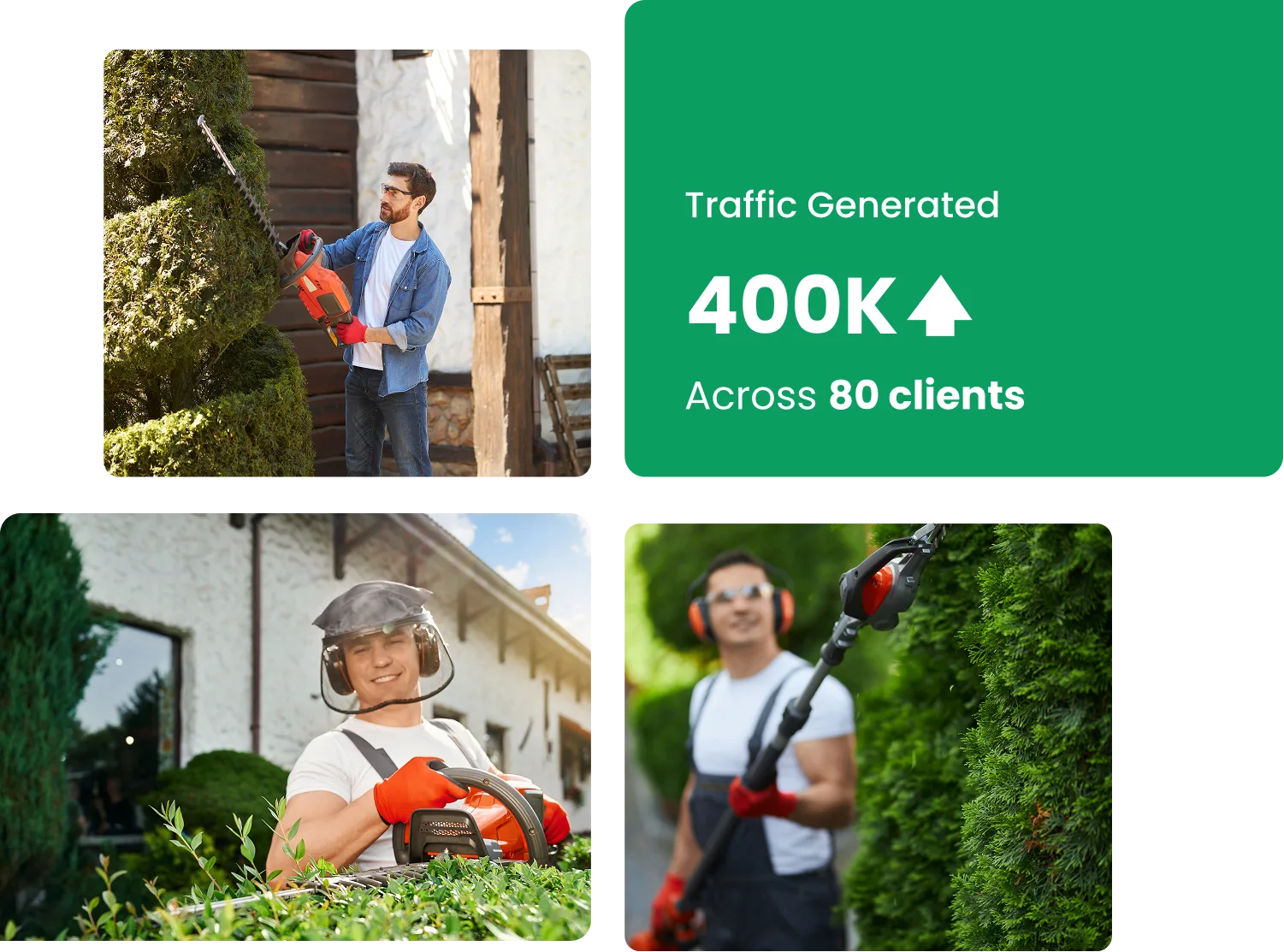

We understand that the day-to-day of running a landscaping business leaves little time for marketing. Most of your energy goes into job sites, managing crews, handling equipment costs, and juggling seasonal demand. Add in weather delays, last-minute client changes, and rising operating expenses, and it’s easy to see why marketing slips down the list.
That’s when ads can feel like a quick fix, but once you stop paying, your visibility disappears, and the cycle starts over. What you really need is lasting authority online, the same way you’ve built it in your community.
That’s where landscaper SEO will help you. As a landscaping SEO agency, we’ve helped 80+ landscaping companies turn their websites into lead-generating machines. Below, we’ll share the strategies that consistently bring in customers without draining your time or budget.
Strong SEO for landscapers starts with smart keyword choices. While broad keywords like 'landscaping services' describe the general service, they may not always be the best starting point.
People often search for specific subservices, and these broader terms can be highly competitive. It may make more sense to focus on less competitive, more targeted keywords that align with what potential clients are actually looking for.
Every service you offer should be backed by its own keywords, such as:
To find those keywords, do this:
Focus on long-tail keywords; they may get fewer searches, but they capture people who are closer to making a decision. You can see some examples below.
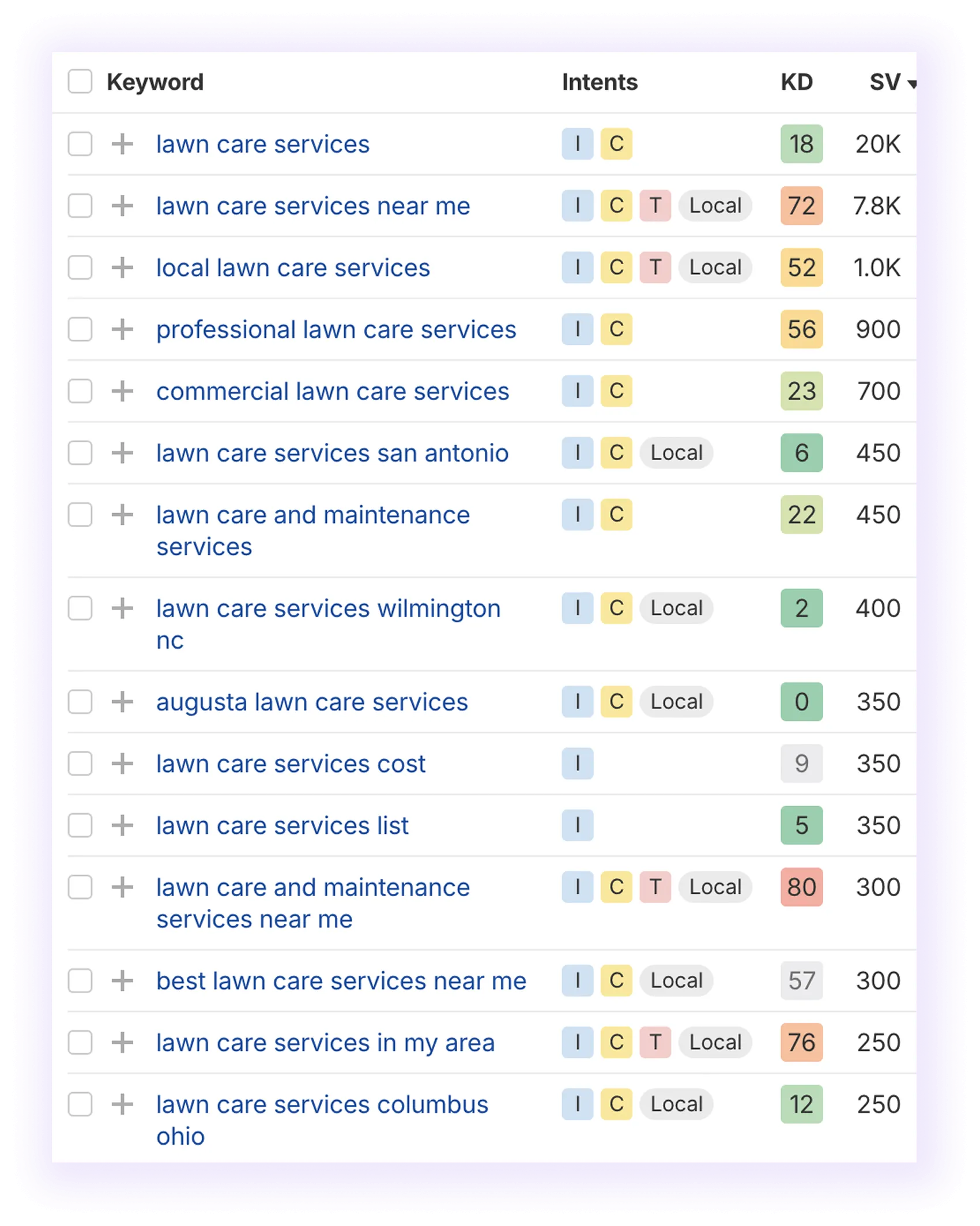
Here is another example of service keywords that, as a landscaper, you can focus on.
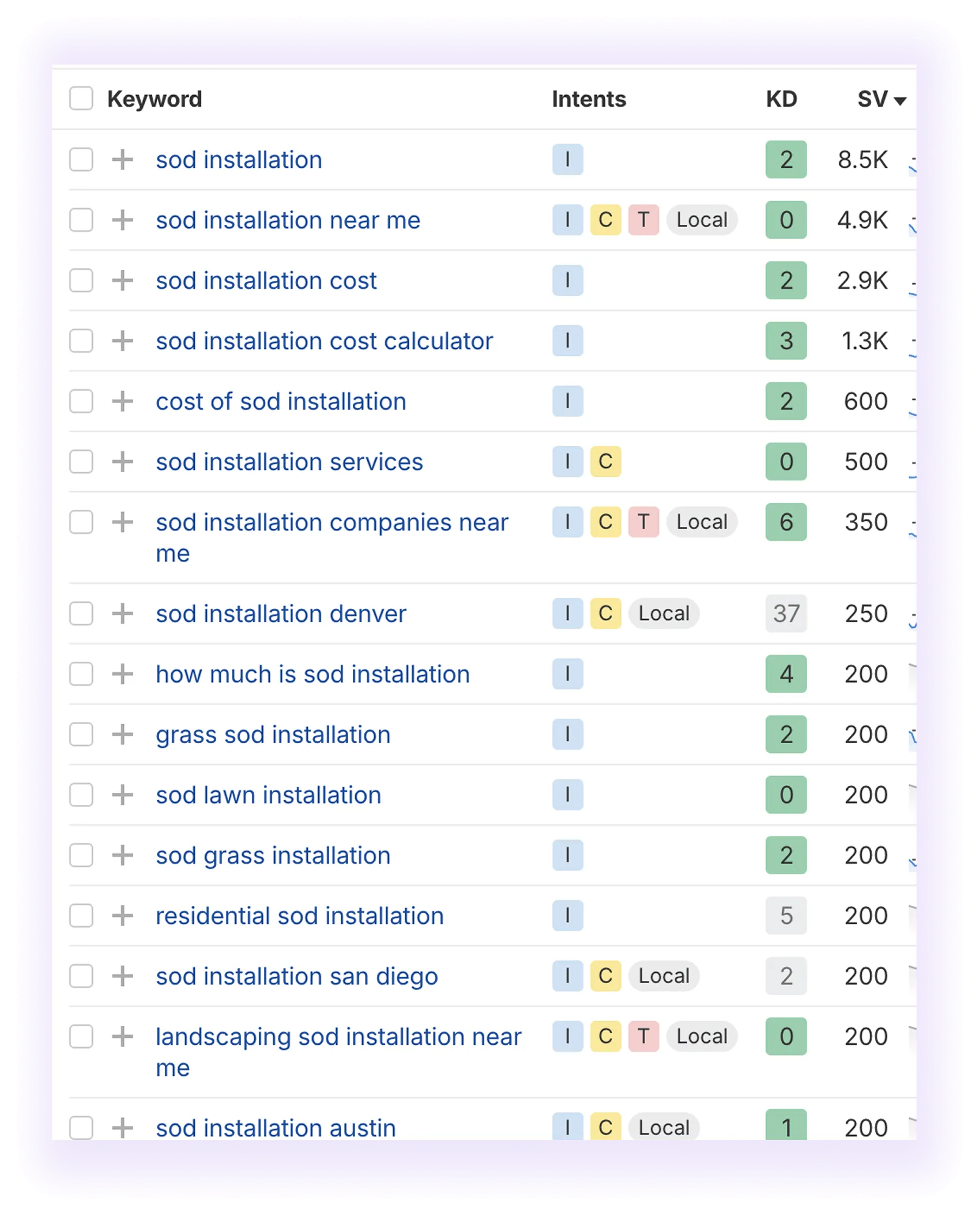
Note: This list is just a glimpse of what you can target to bring quality traffic and increase your leads.
Keyword research can take hours you don’t have. As a landscaping SEO agency, we handle it for you, so you can stay focused on projects while we make sure the right clients find you online.
We analyze how homeowners and property managers search with our premium tools, build a keyword strategy around your services, and position your business ahead of local competitors. Let's review your landscaper website.
The result: more qualified leads, steady growth, and less time worrying about marketing.
Now, let’s explore the structure of your landscaper website.
Think of your website like a property you’re landscaping: without a clear layout, visitors won’t know where to go. A strong structure not only helps homeowners find services quickly but also signals to Google which pages matter most.
Key pages every landscaping website should have:
Make sure your top menu highlights these pages along with your core services and service areas. Just like a well-planned yard, a well-planned site guides visitors exactly where they need to be.
Here is an example of a well-organized navigation bar of a landscaping website.
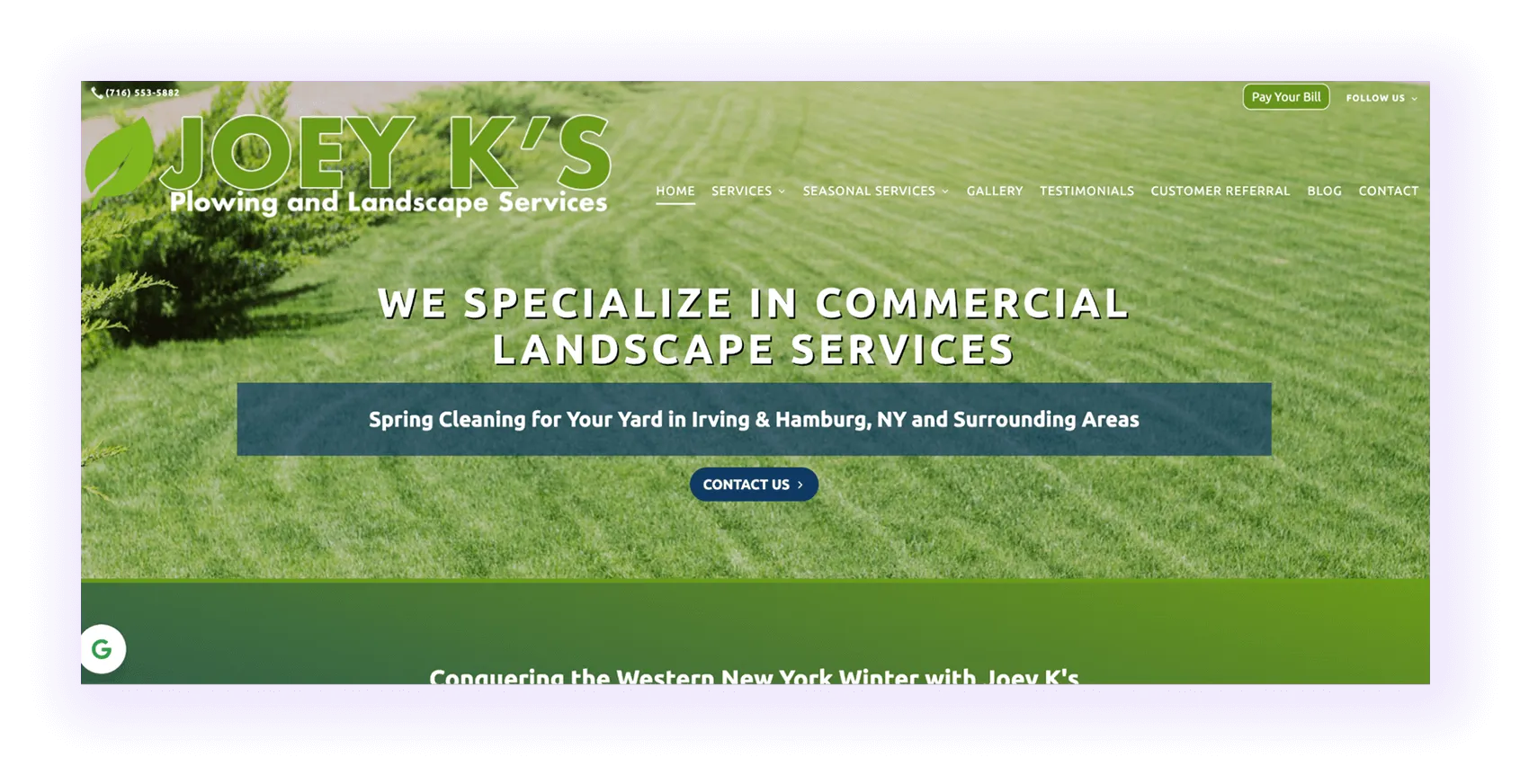
A very small number of your clients search for a “landscaper” in general. Most of the time, they search for the exact service they need. If your site has a dedicated page for that service, you’re far more likely to win the lead.
Each service page should focus on a single keyword and offering, such as “lawn maintenance, tree planting,” or “irrigation repair.” This approach:
Your main menu should also list these services. That way, even if someone comes in for lawn care, they might click over to explore hardscaping or landscape lighting.
Common landscaping service pages to include:
In the example screenshot below, you’ll see how a landscaping website categorized its residential landscaping services in its navigation bar.
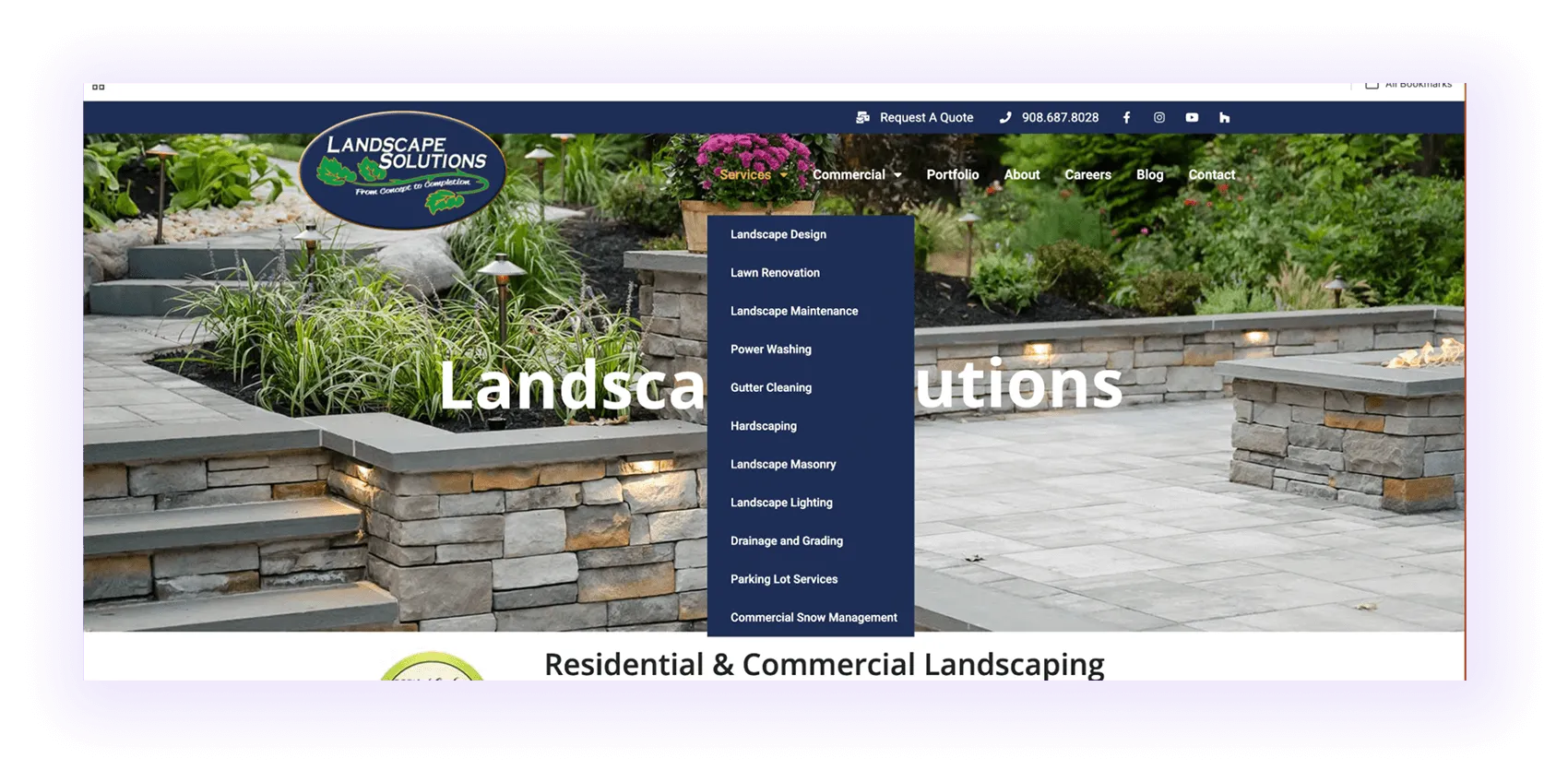
If you work with both homeowners and businesses, give each audience its own page. Separating “residential landscaping services” and “commercial landscaping services” not only makes your site easier to navigate but also helps Google show the right page to the right client.
From there, you can create subpages that highlight specific offerings, like “backyard design” under residential or “office park maintenance” under commercial.
Many landscaping websites showcase both options directly in their top menu, so visitors immediately see that you serve both markets.
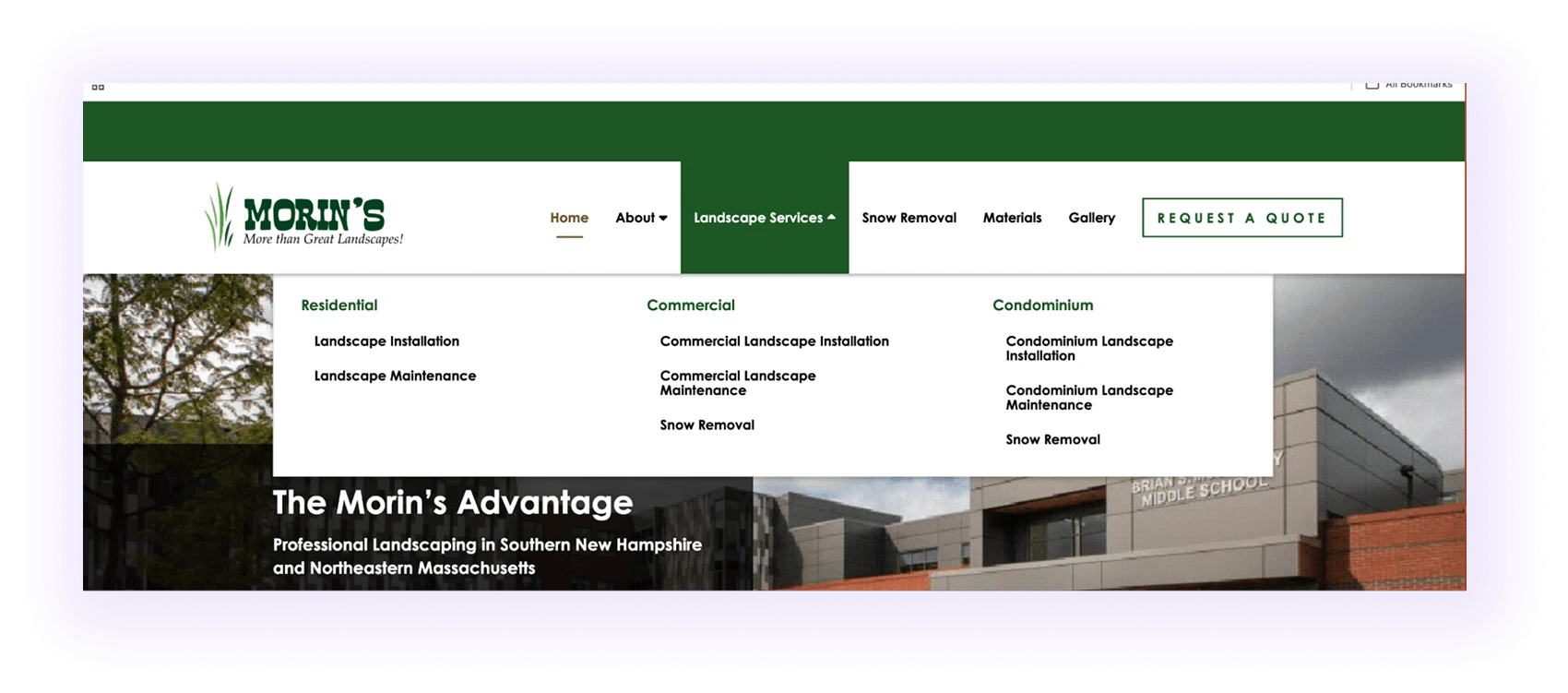
When homeowners or property managers look for landscaping, they almost always want someone nearby. Searches often include a city name or “near me,” which is why creating location-based service pages is essential.
These pages tie your business directly to the areas you serve, boosting local visibility and attracting clients ready to book.
Examples of local keywords:
Having pages for each will help your local SEO for landscaping companies, making it clear where they work and improving their chances of ranking locally.
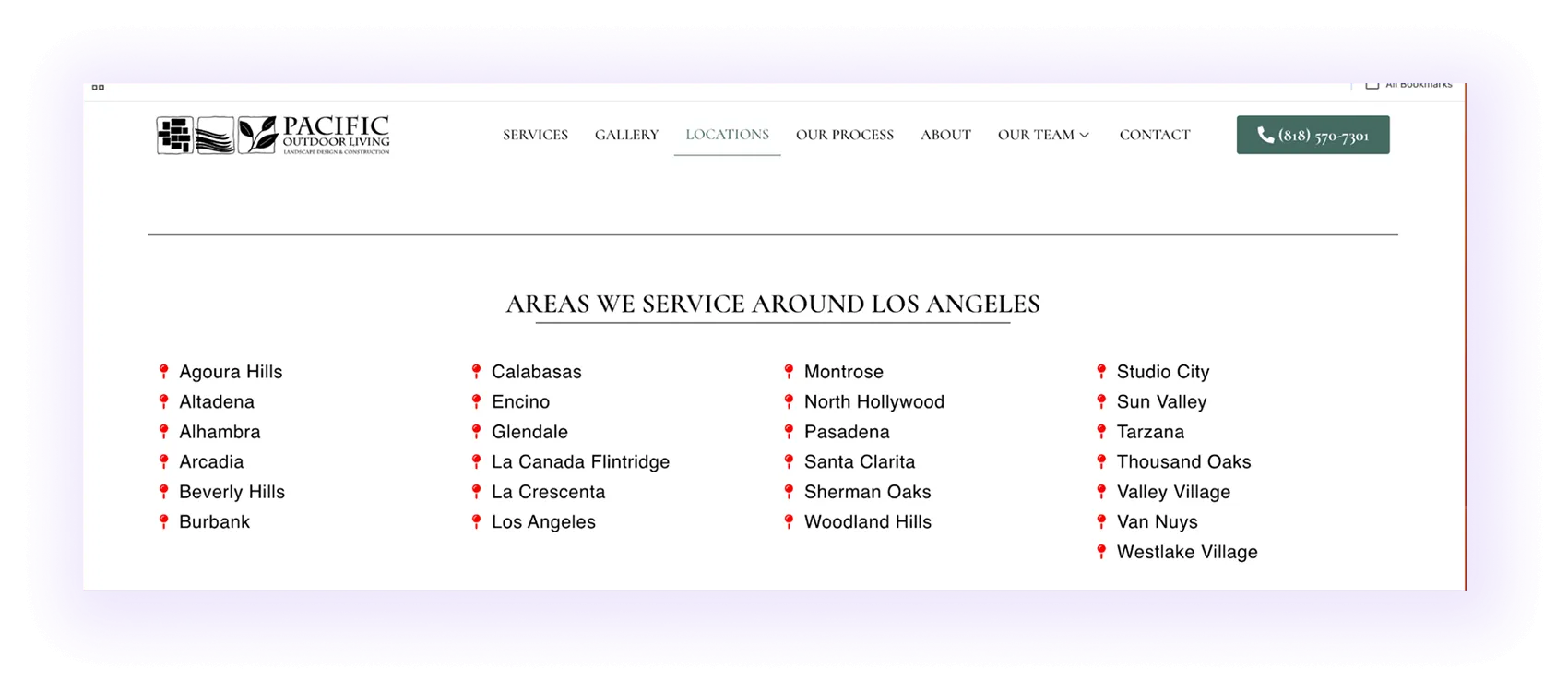
Homeowners often turn to Google with questions before hiring a landscaper, like:
Answering these queries with blog posts is a smart way to capture prospects right when they’re researching solutions.
The most effective approach for SEO for landscapers is using topic clusters. For example, if you have a service page for lawn maintenance, support it with related blogs. This structure shows Google that you know your domain well.
We’ll share more examples and details later in this guide.
Stop Guessing Your Landscaper Website Structure—We Will Show You Exactly What Pages You Need
We’ve partnered with over 80 landscaping companies and know exactly which website pages drive leads. Let us guide you in structuring your site to attract the right clients and drive long-term growth.
We’ve already covered the importance of local pages, but that’s only the first step. You also need to optimize for every city or region you serve. Your local SEO for landscaping companies will look different depending on how many areas you cover.
With the proper local optimization, your landscaping business can show up in each of those markets. Let’s break down how to do it.
Let’s say you serve one city or area; make sure Google knows it. The goal is simple: connect your services to the homeowners searching right there. For instance, if you’re in Austin, your pages should target terms like “landscaping services Austin.”
To optimize, use both your service and location keywords in visible spots: headings, meta titles, and meta descriptions. In the example shown, the landscaper highlights the city name alongside the main keyword to boost local relevance.
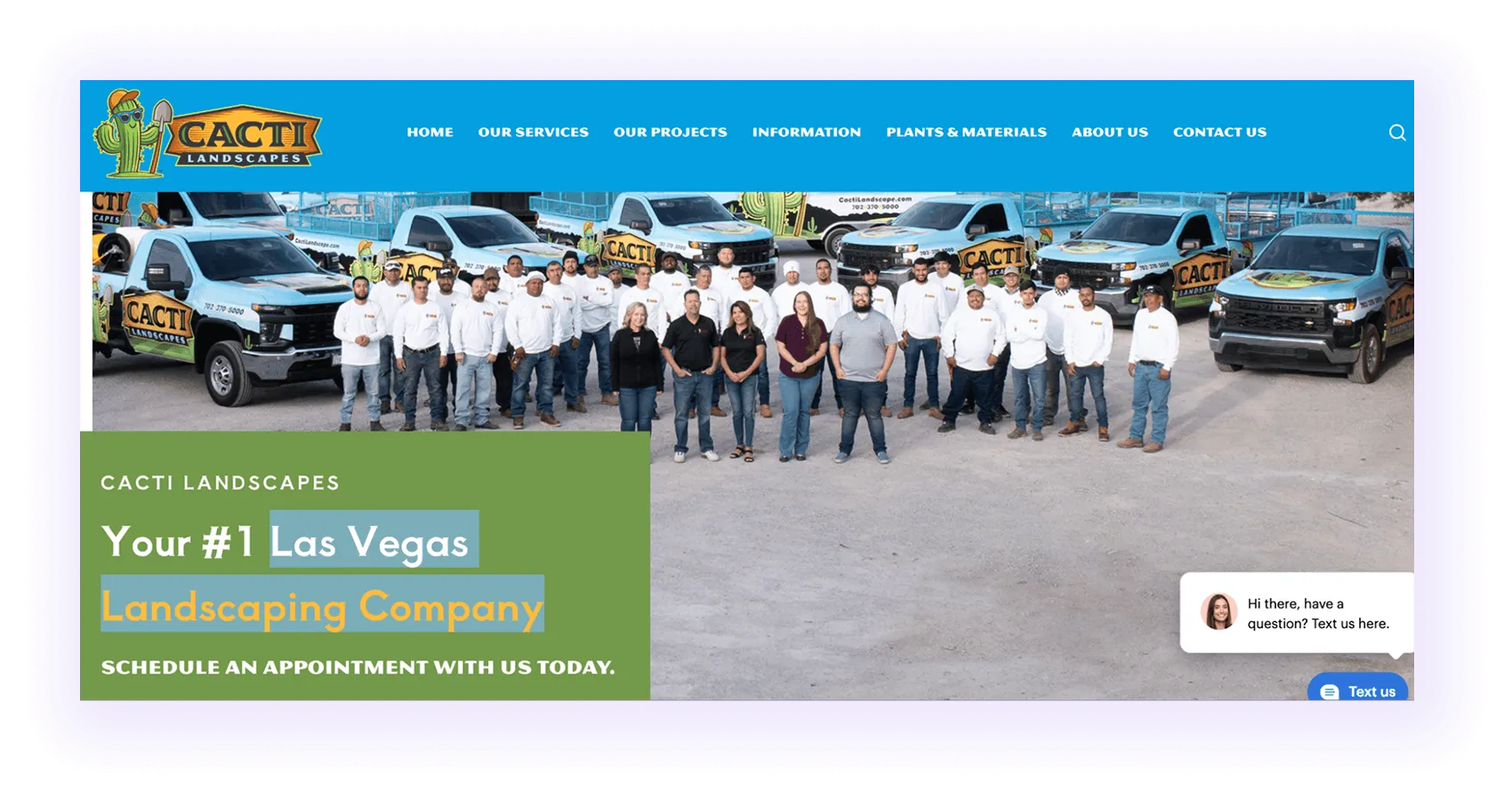
Expanding beyond one city means your landscaper SEO needs to scale with you. Instead of relying on a single service page, create unique pages for each city or region you serve so Google knows exactly where to rank you.
For example, a company covering multiple states might build pages around:
Each page should be tailored to that location (using the service + city in headings, meta titles, and descriptions), while avoiding copy-paste content.
To tie it all together, add a location hub page listing every city you serve. It not only helps Google map your reach but also gives clients a simple way to find their area.
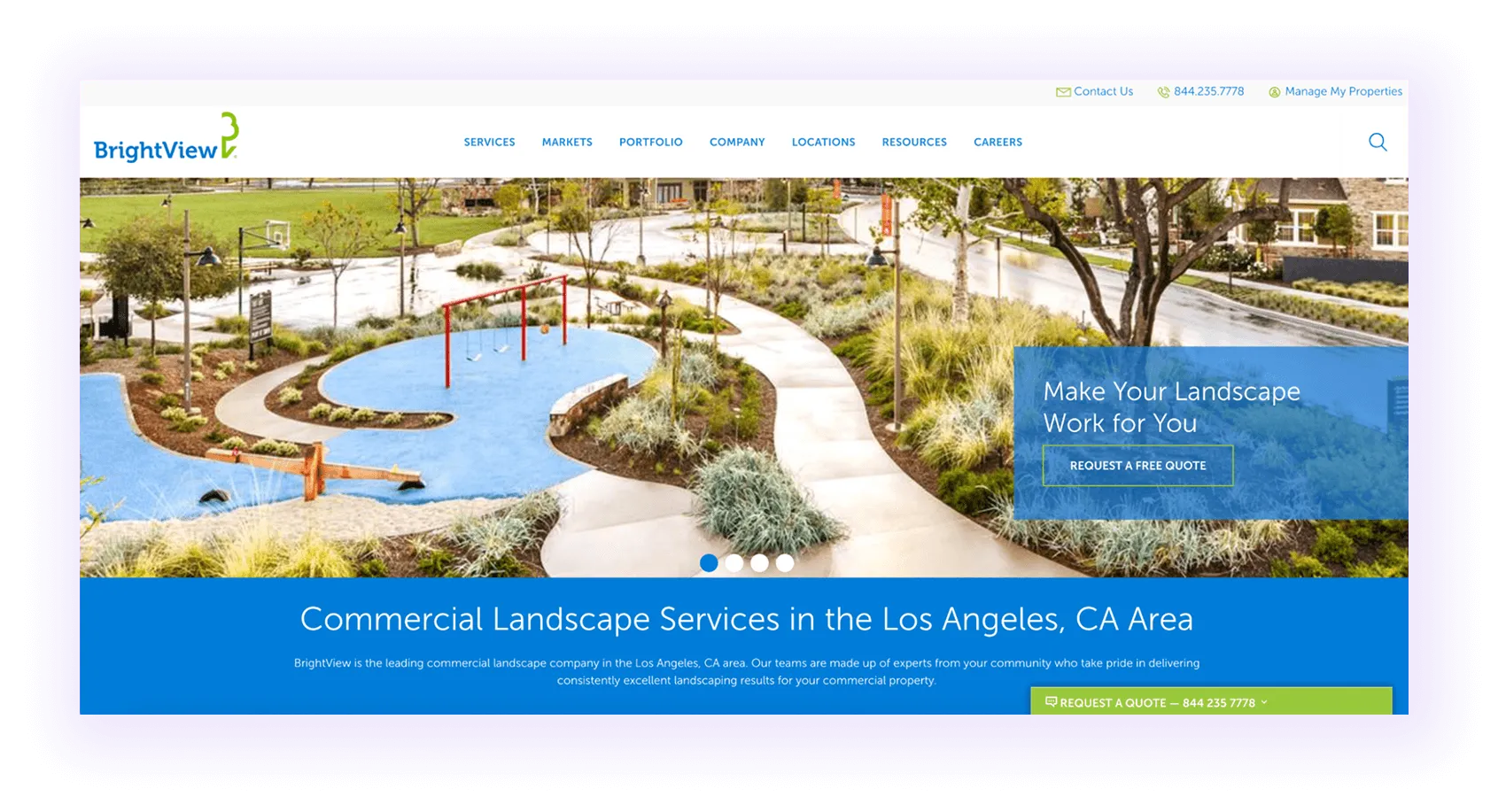
Pro tip: Build a location hub page that lists all the cities you serve. It makes navigation easier for both visitors and Google.
URL structure examples:
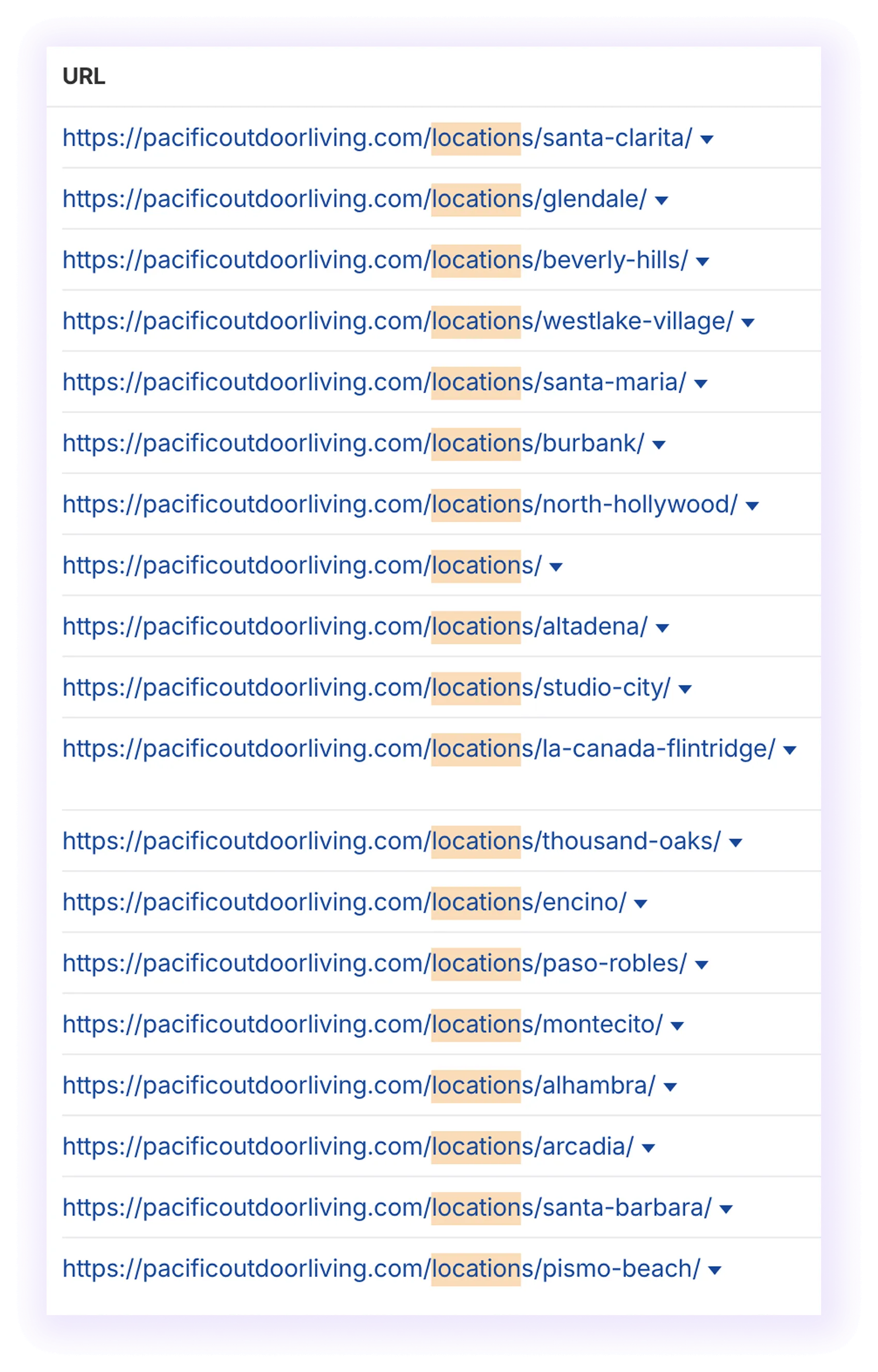
For local searches, homeowners often see your Google Business Profile (GBP) and Google Maps listing before they even click on your website. That means your profile isn’t just a directory entry; it’s often a prospect’s first impression.
Here’s how landscapers can make the most of it:
Here is an example of a well-optimized GBP of a landscaping company in LA.
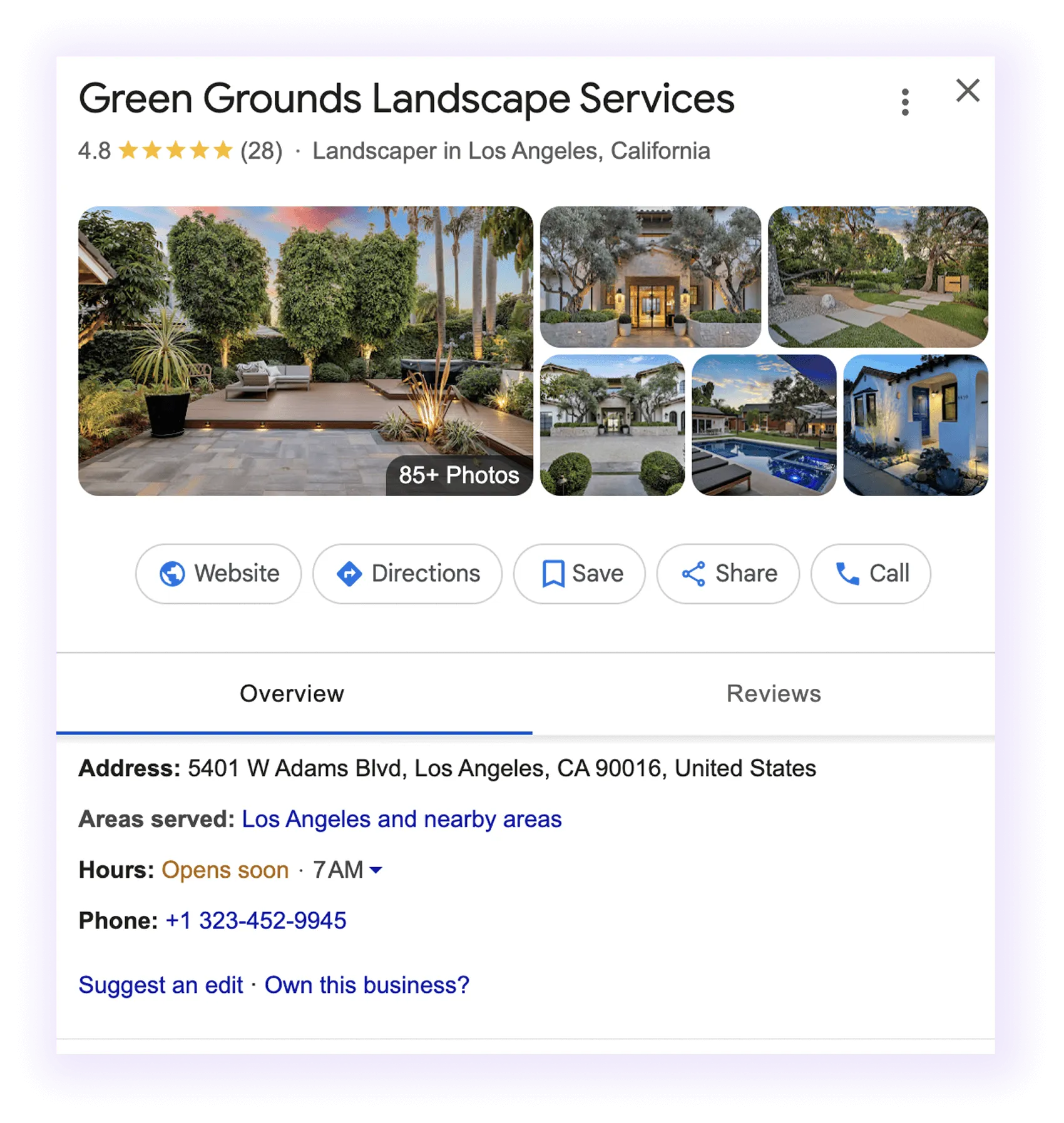
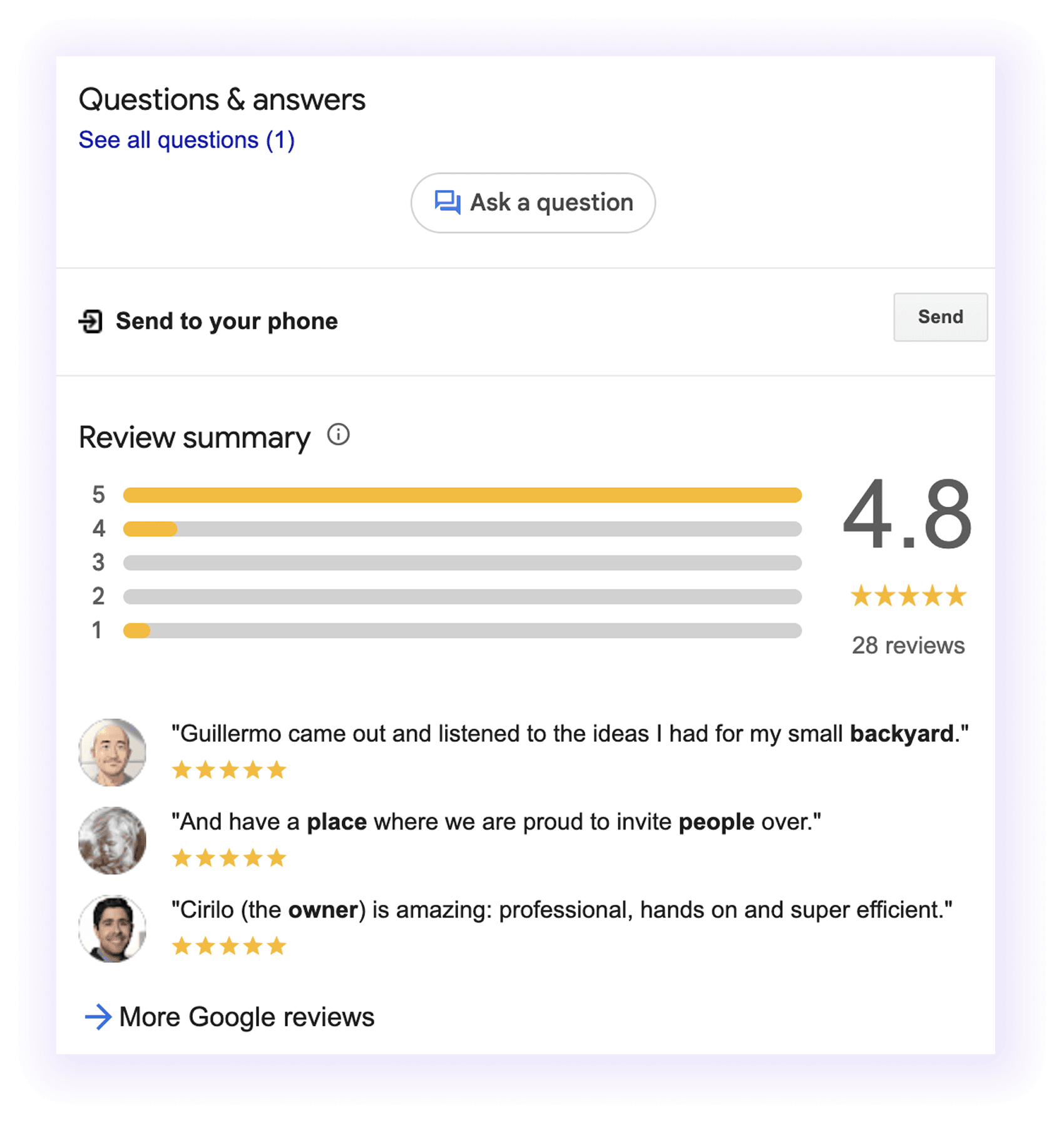
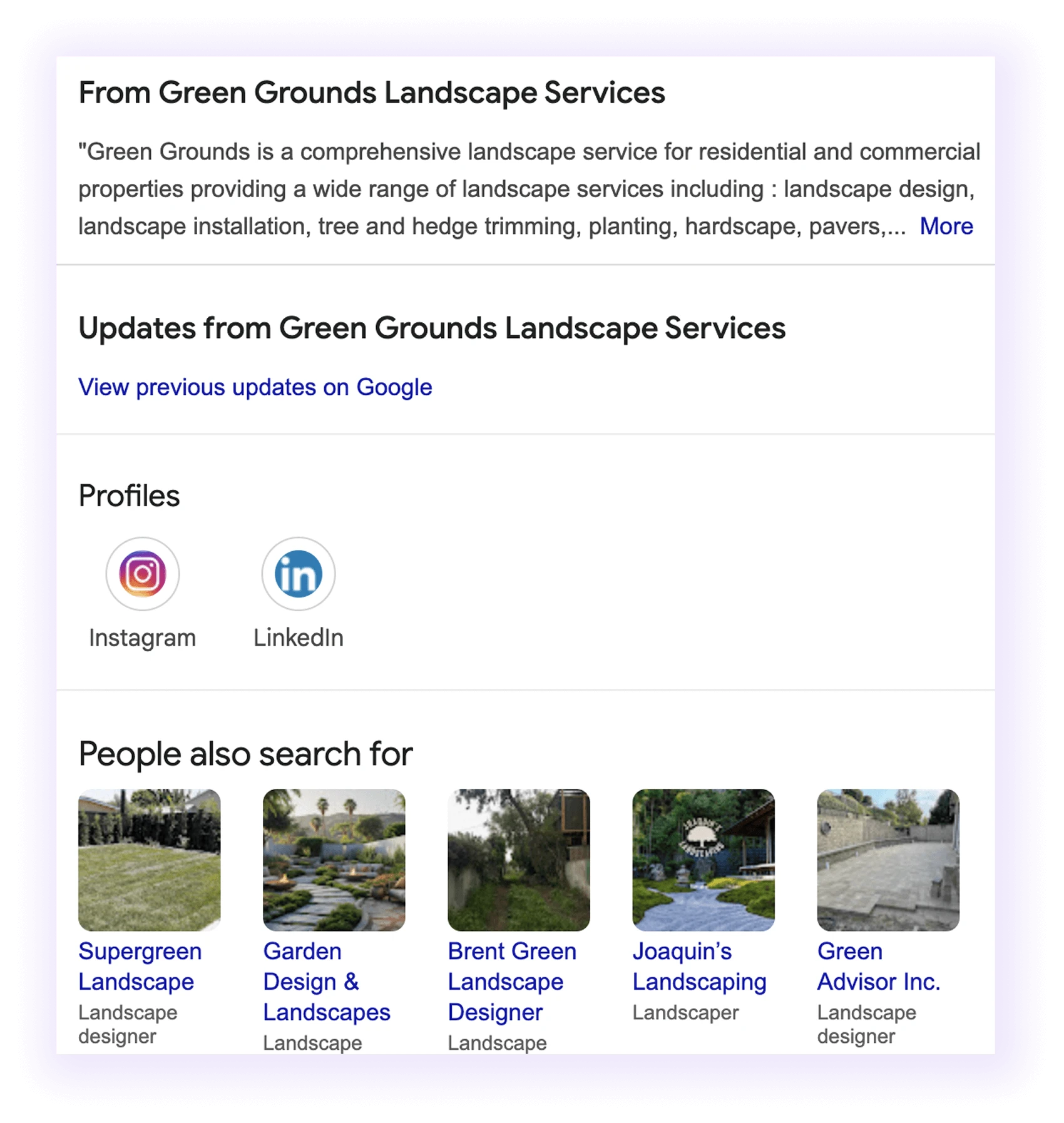
If you optimize your GBP, you will start showing up in map results when homeowners search for terms such as “landscape services in LA.”
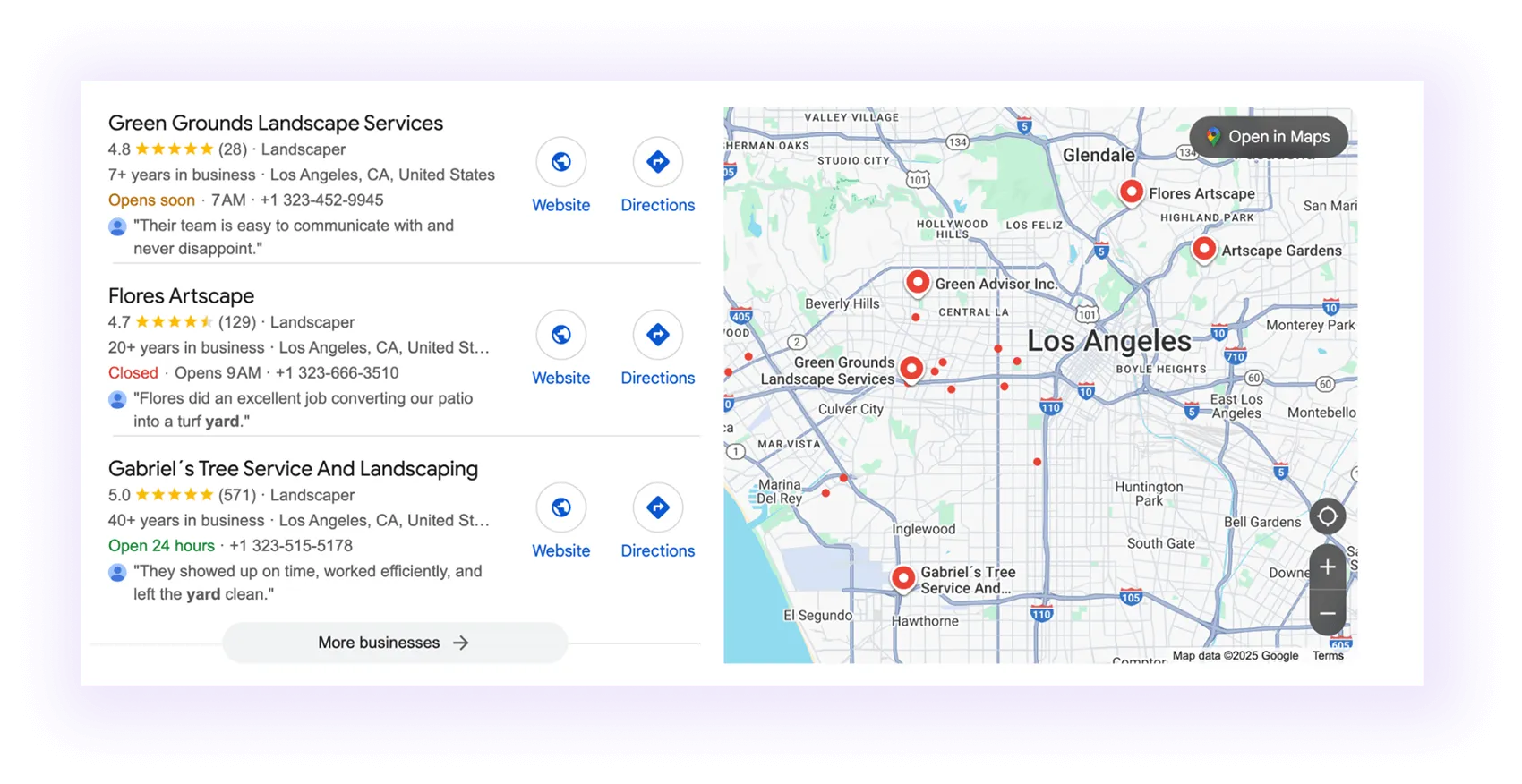
Getting visitors to your site is only half the job. Once homeowners land on your landscaping website, your content has to convince them you’re the right choice.
The goal is to build trust, highlight your value, and make it easy to take the next step.
Here’s how landscapers can craft content that converts:
Example of testimonials:
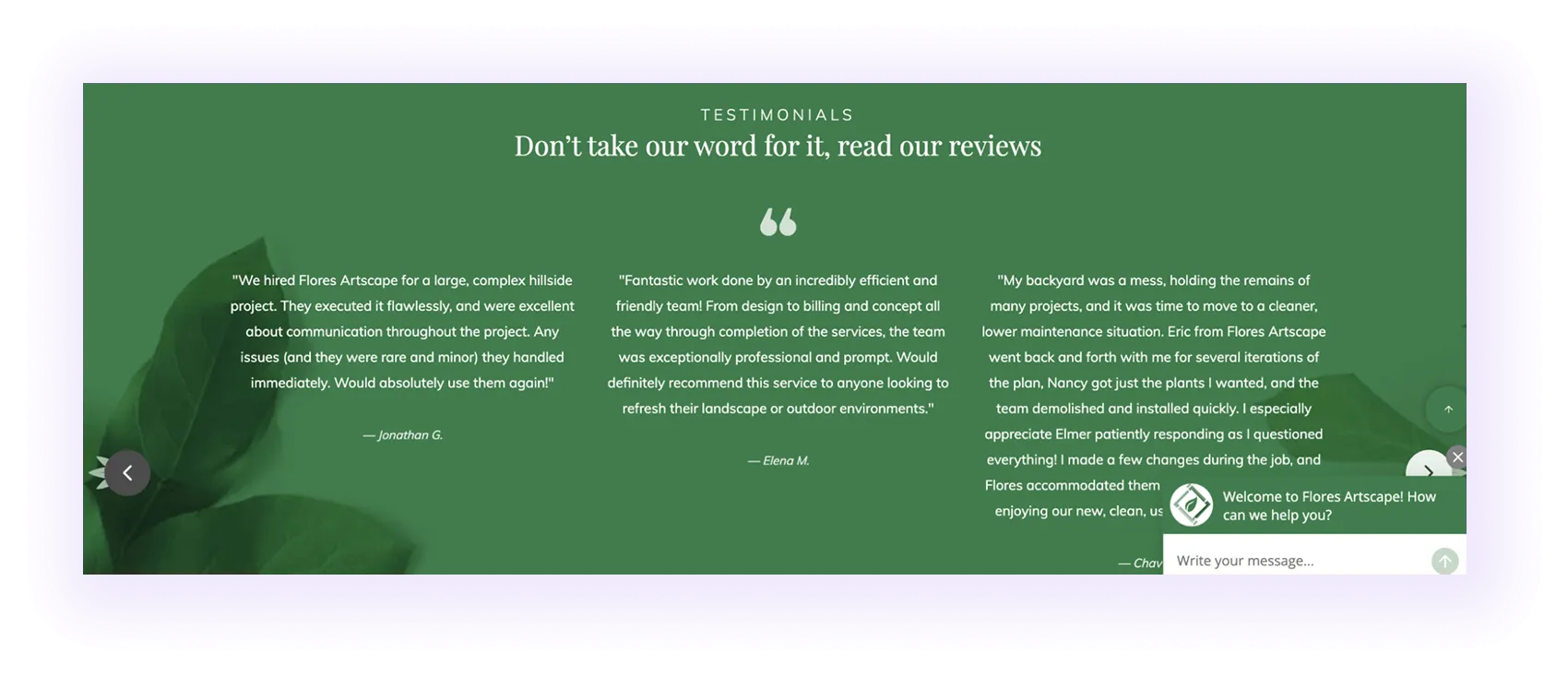
Example of Featured Section:

Example of Case studies:
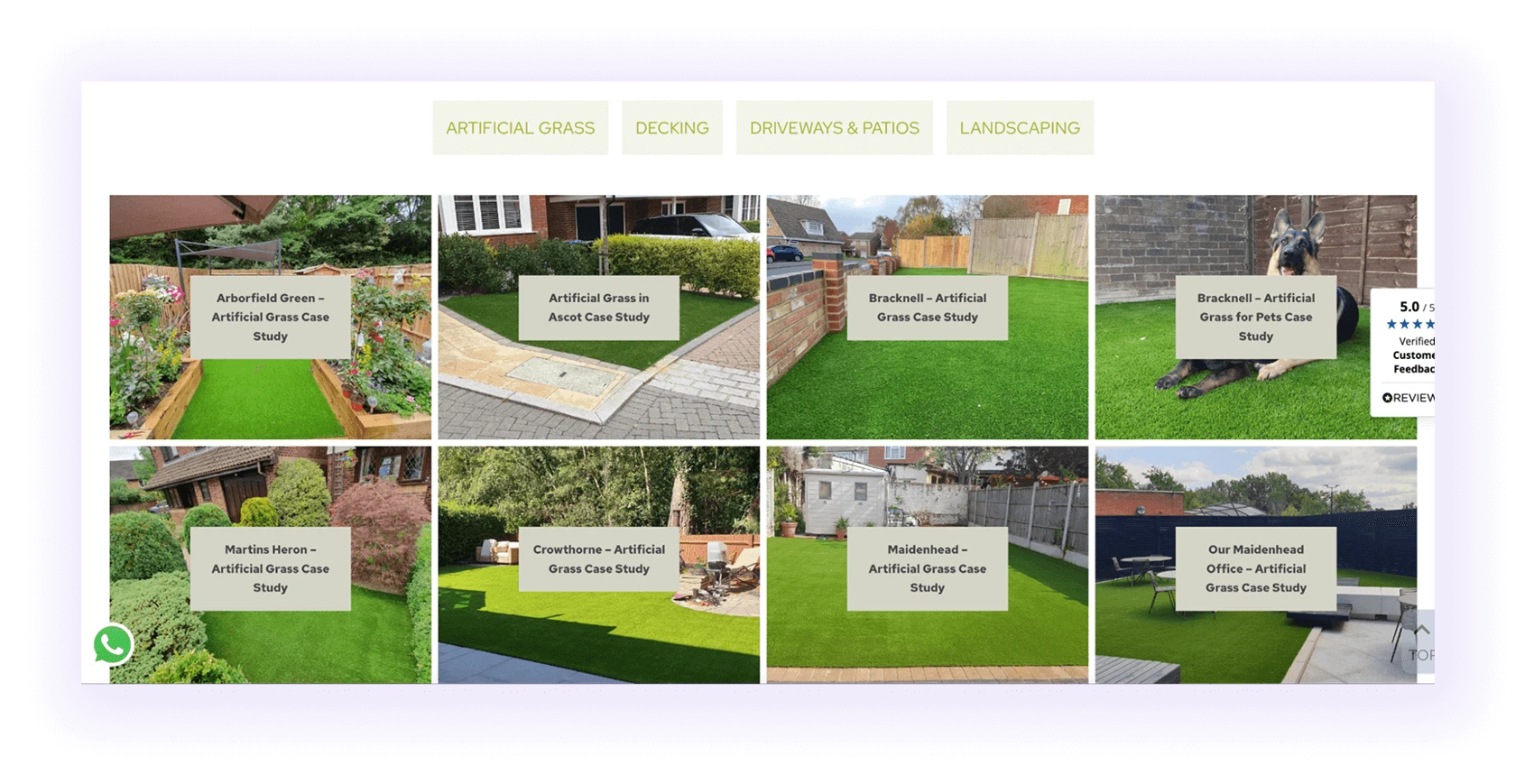
Homeowners don’t just want a landscaper; they want answers: pricing, seasonal care tips, project inspirations. They’re searching Google with specific questions. A well-planned blog shows you understand their needs, builds trust, and strengthens your SEO.
The most effective approach is topic clustering:
Example topic cluster:
Use tools like Google’s People Also Ask and Related Searches to discover real homeowner questions worth writing about.
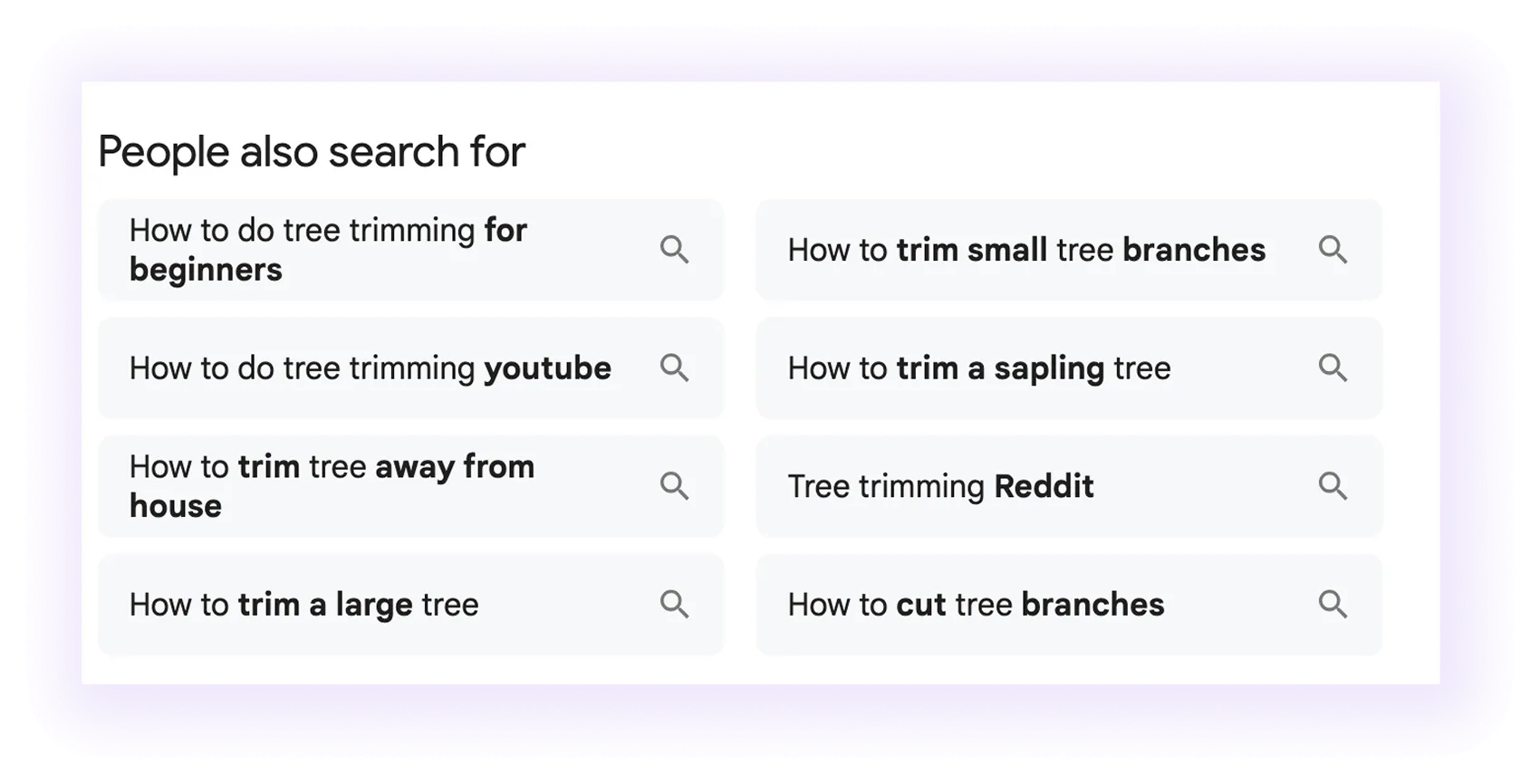
When writing a blog for your landscaping business, your main goal is to help the reader understand every step of the information you’re sharing. To do this effectively:
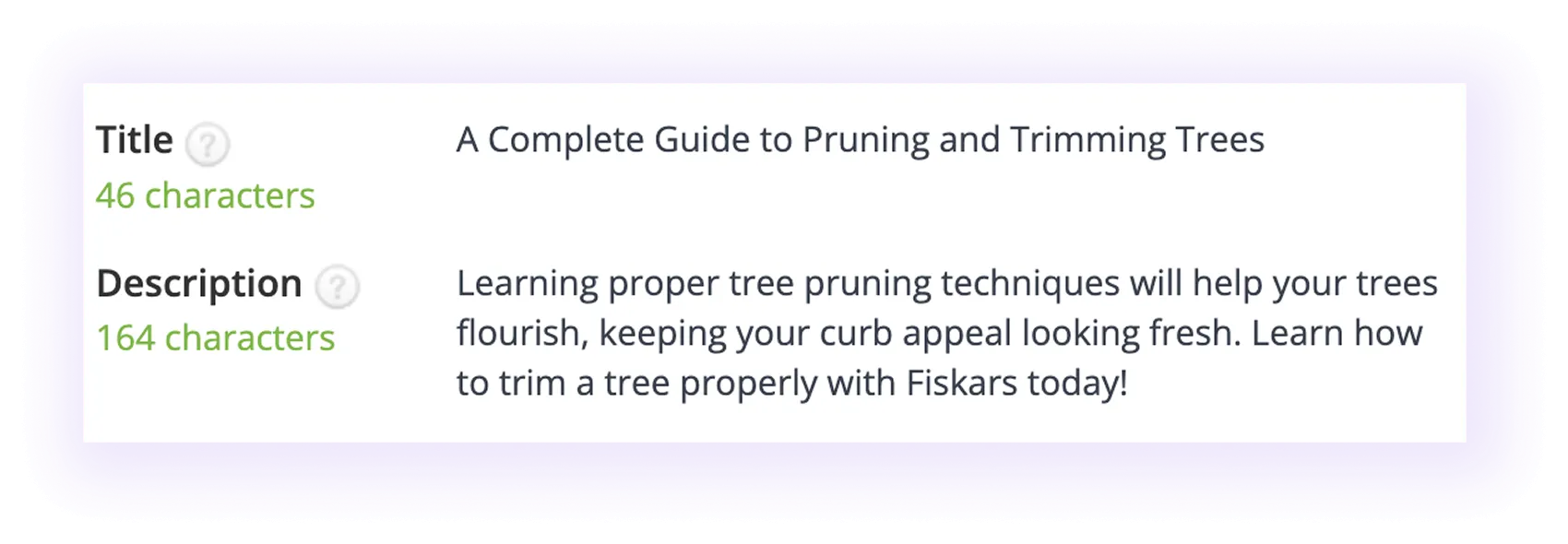
Even if your landscaping content is strong, a slow or poorly structured site can hold you back. Google rewards sites that are fast, mobile-friendly, and easy to crawl: key factors that fall under technical SEO for landscapers.
For landscapers, the top priorities are:
Here’s a good example of a landscaping sitemap:
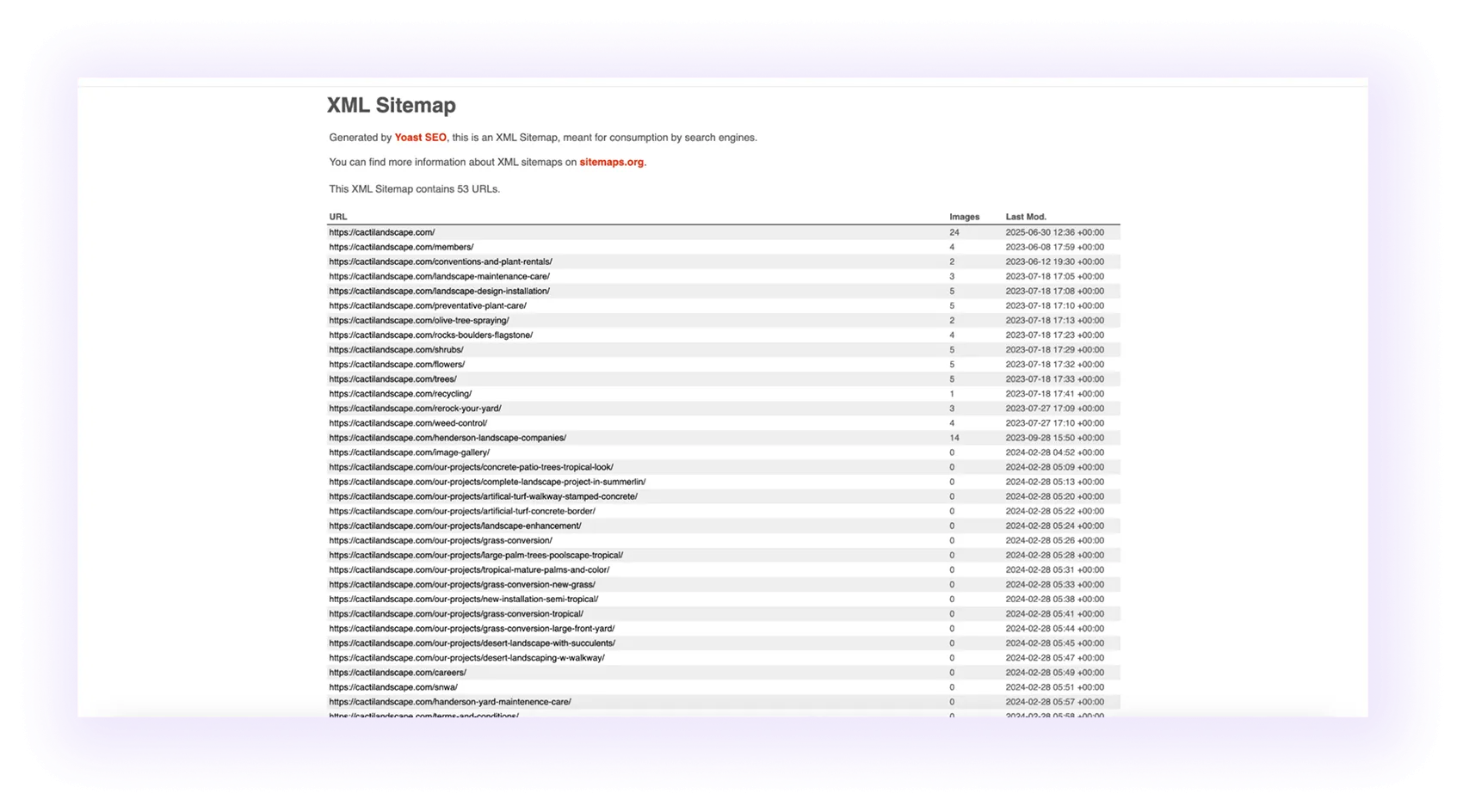
Once your sitemap and crawl settings are in place, the next step is making your site crystal clear to Google with Schema Markup. Schema is structured code that defines what your landscaping company offers, helping you show up with rich results in search (services, reviews, FAQs, images).
Here’s an example of a landscaping schema in action:
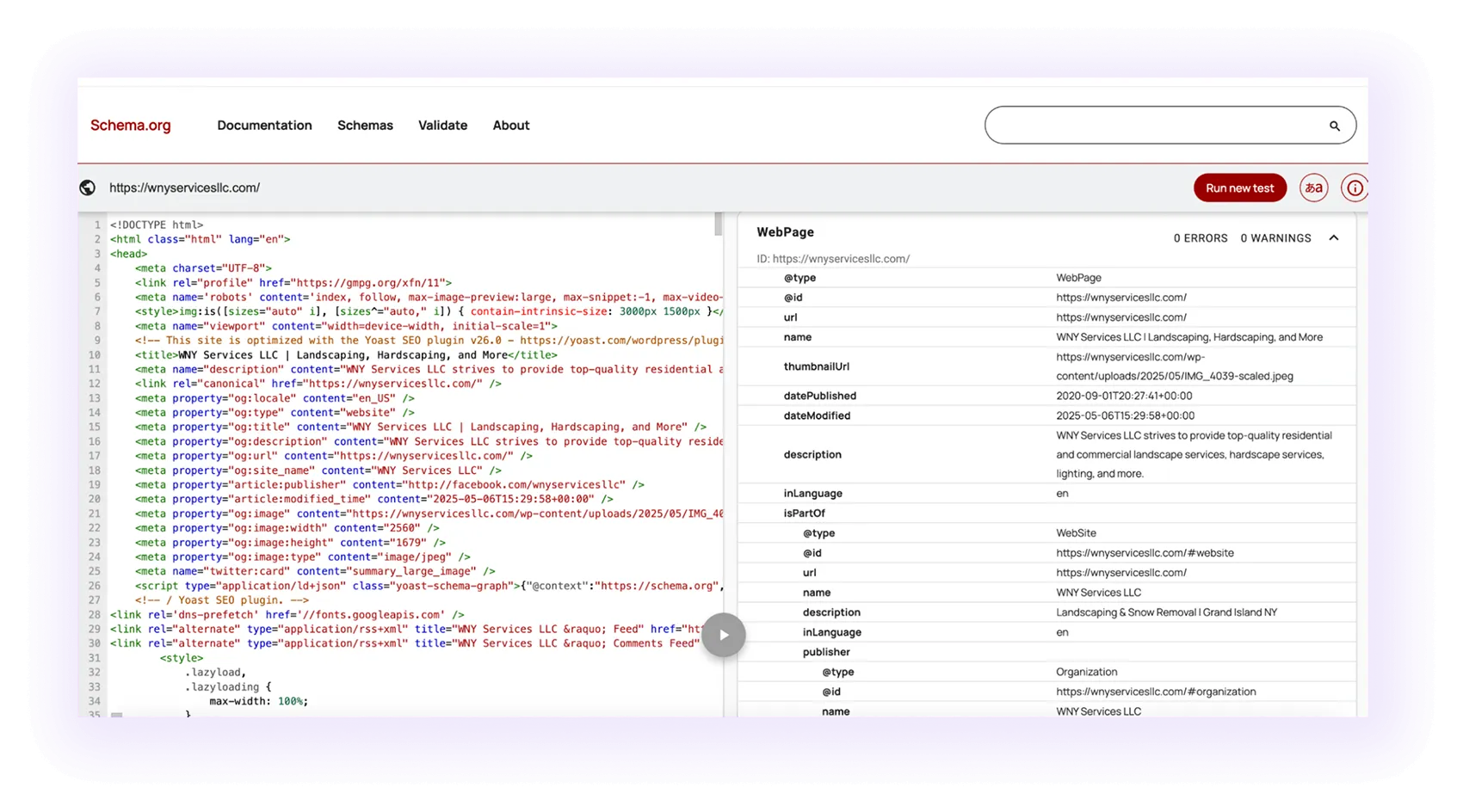
Although this website uses WebPage schema, we recommend that you use the following most valuable schema types for landscapers:
Keep your landscaping service URLs short and clear so homeowners and search engines instantly understand the page. Avoid numbers, symbols, or extra codes that add no value.
Example of an SEO-friendly URL:
www.yourlandscapingcompany.com/lawn-maintenance-austin
Example of a non-SEO-friendly URL:
www.yourlandscapingcompany.com/page?id=12345
Structure’s setup is now in place, but Google and your clients still need a clear path to follow. Internal links act like signposts, guiding visitors through your services and showing Google how your pages connect.
Ways landscapers can use internal linking effectively:
This structure improves navigation for homeowners and signals to Google which services and locations should rank higher.
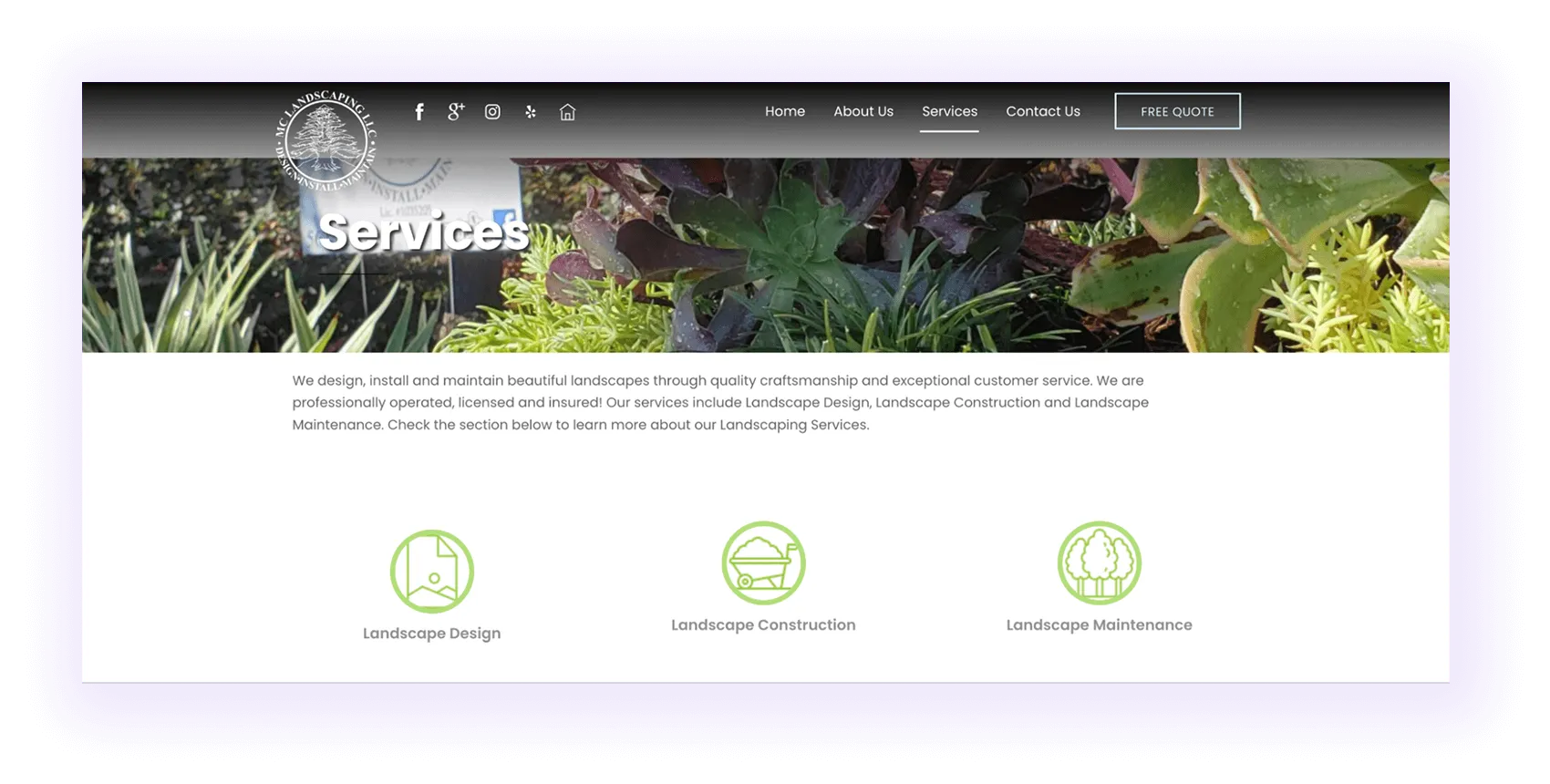
Most homeowners check landscaping services from their phones. If your site isn’t mobile-friendly, they’ll leave fast. For landscapers, a mobile-ready site means:
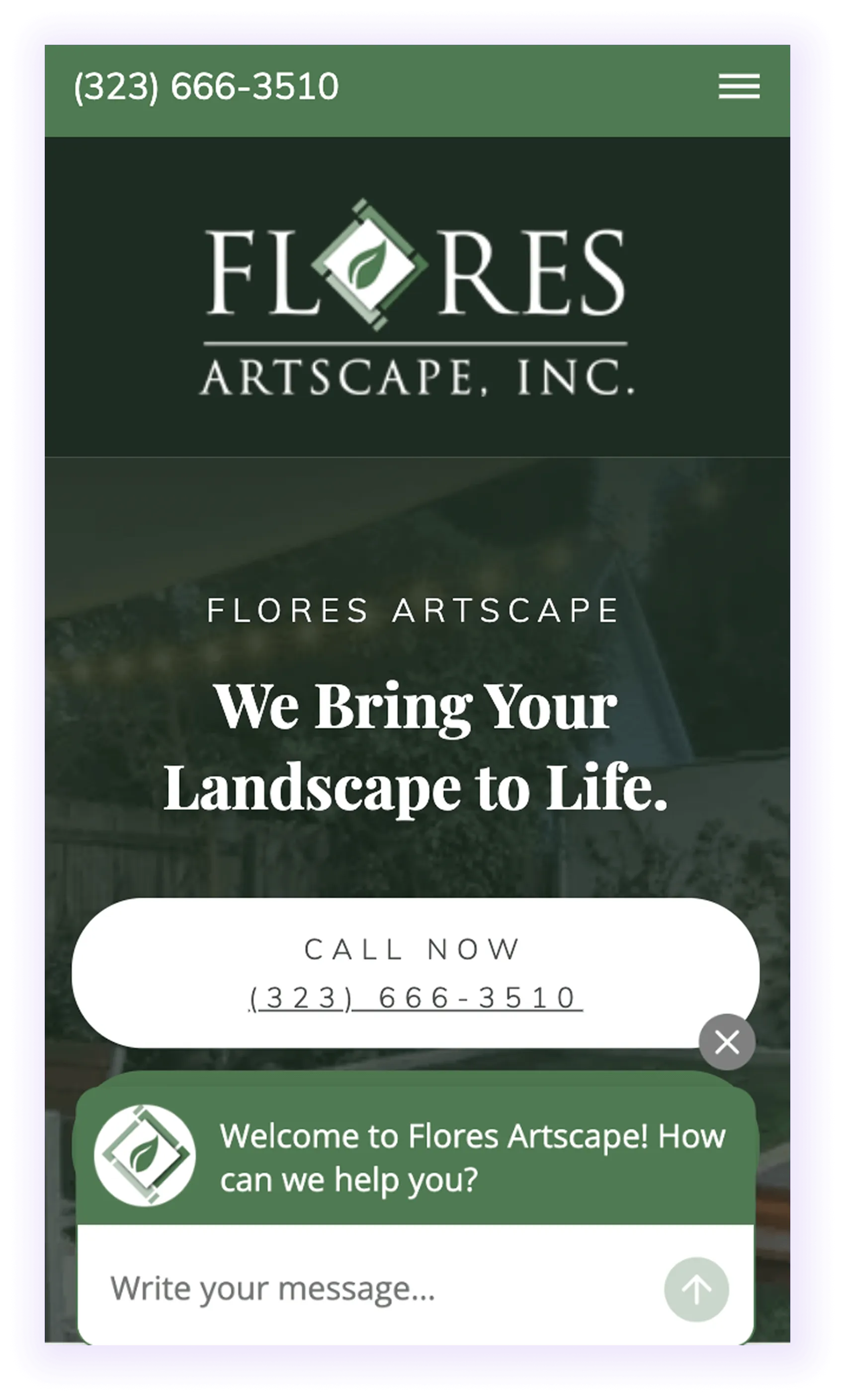
Your landscaping projects may impress in person, but if your website drags, potential clients will leave before they see them. Speed matters for both visitors and Google rankings.
To keep your site fast and smooth:
Check your performance with tools like Google PageSpeed Insights or GTmetrix to spot issues and track improvements.
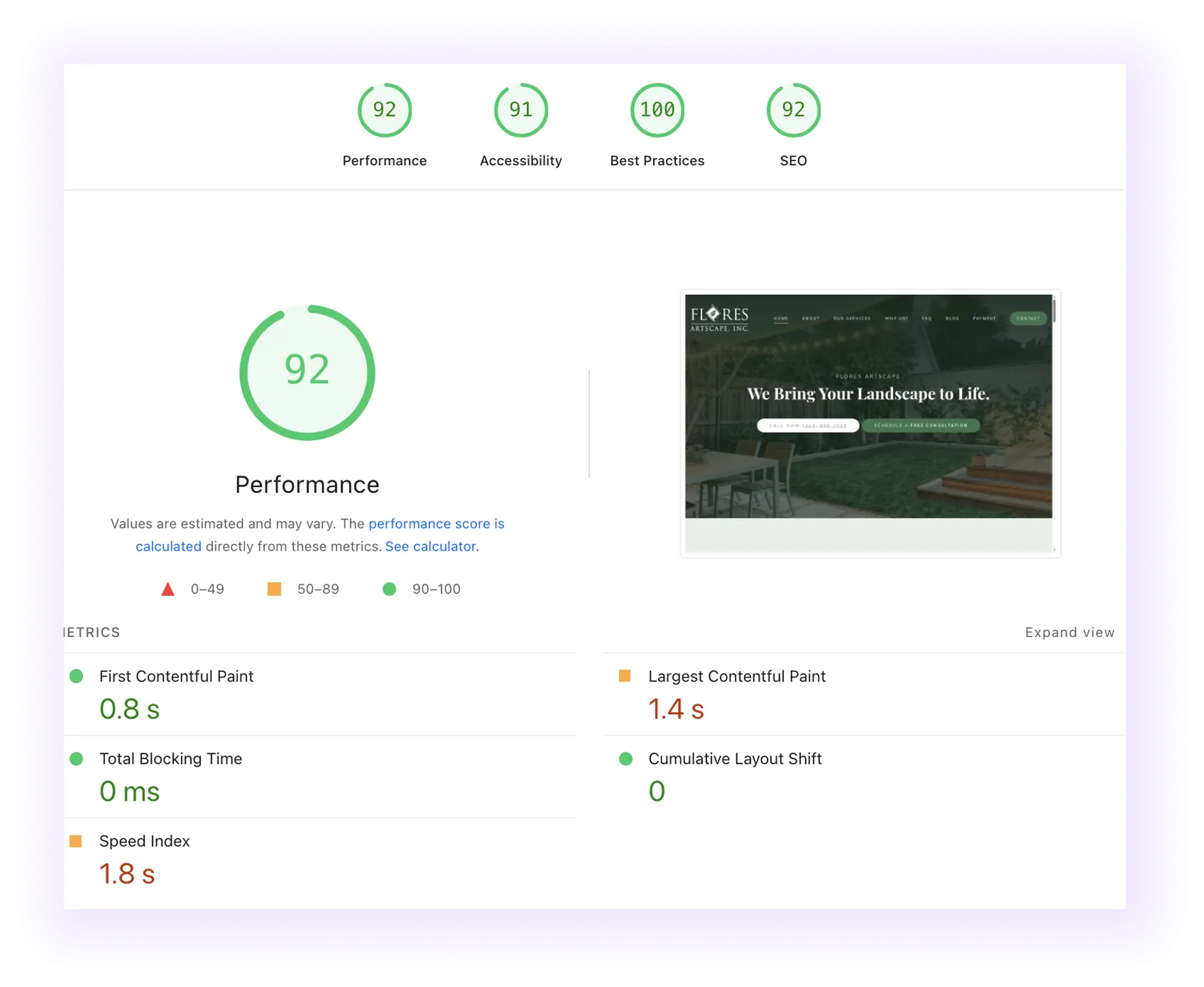
Google PageSpeed Insights
Core Web Vitals for landscaper sites:
Every update, whether it’s new photos, blog posts, or design tweaks, can affect site performance. Running monthly audits keeps your landscaping website fast, error-free, and ranking well.
Key checks include:
Use tools like Google Search Console or Screaming Frog for quick scans. For in-depth reviews, a landscaping SEO agency can conduct over 150 checks to identify issues before they impact performance.
Now your on-site SEO for landscapers is complete. Let’s work on boosting your authority, since without it, ranking’s impossible.
The #1 rule for authority-building: Quality backlinks from relevant, high-authority sites are key. So, focus on industry-related sources such as:
Once you’ve identified the right industry platforms, the next step is getting your brand mentioned on them. There are two proven ways to make that happen:
1. Publishing Guest Articles: Share practical, landscaping-focused insights on reputable sites in home design, construction, or gardening. Topics might include:
2. Link Partnerships: Instead of creating new articles, you can request placement of a natural backlink within content that’s already live on high-authority sites. This approach works well when the article aligns with your services.
Both result in more targeted traffic and strengthen your site’s position in search results.
Examples of where these tactics are used:
Next, list your landscaping site in trusted, niche directories. It’s a smart way to earn backlinks and boost your credibility in Google’s eyes.
Examples of landscaping directories:
Best practices for landscaping directory listings:
This is how your profile should show up:
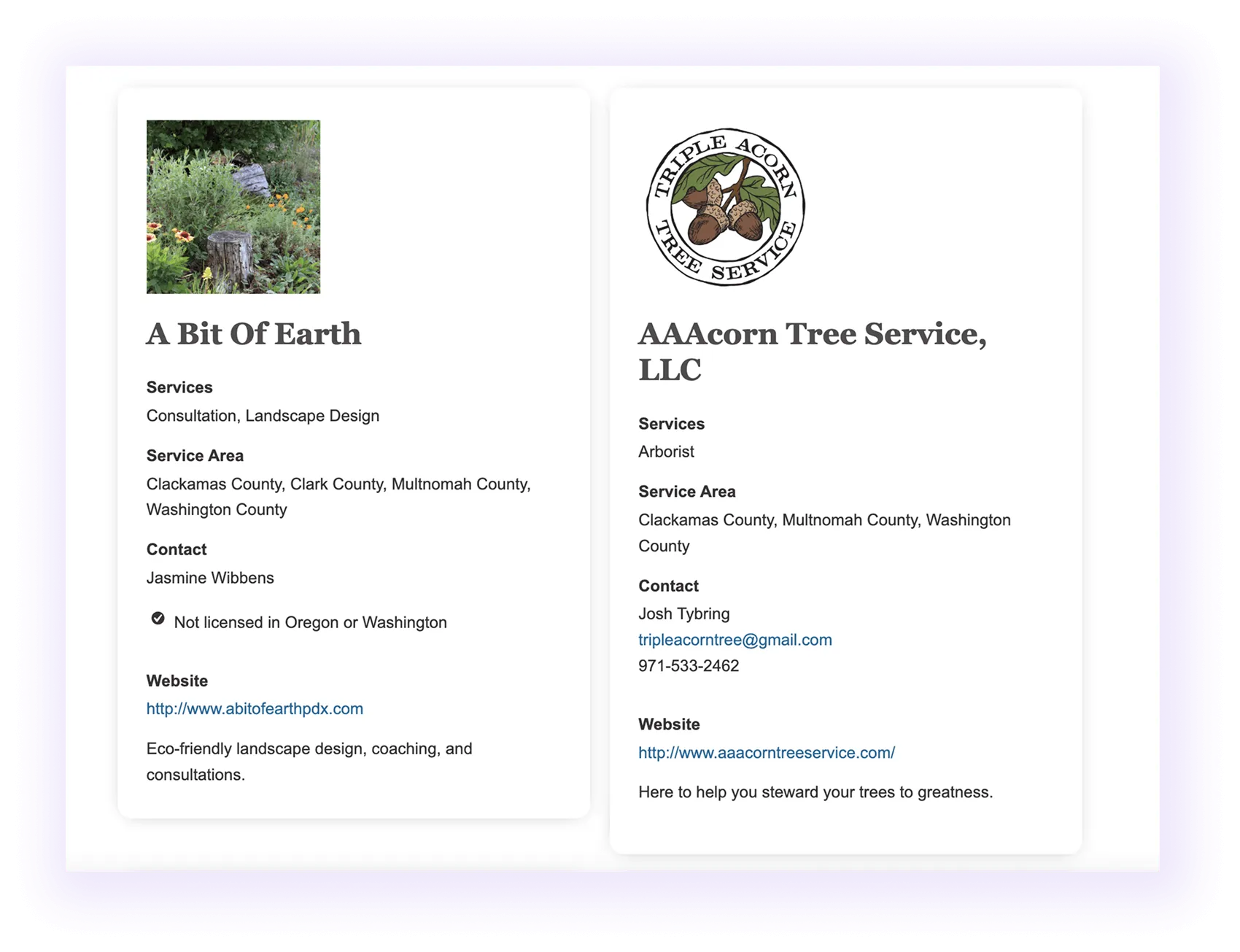
The #1 rule of authority-building hasn’t changed: quality > quantity. And in 2025, the best way to earn quality backlinks is through digital PR.
You create newsworthy stories, expert commentary, or trend insights that journalists and industry sites want to feature. Instead of chasing low-value links, you’re earning coverage that positions your landscaping company as a trusted voice in outdoor design.
For landscapers, this could mean:
The result: high-authority backlinks, brand credibility, and exposure to new audiences, all without paying for ads.
Example placement: Realty Times
Topic idea: Award-Winning Landscaping Projects That Transform Everyday Yards into Retreats.
Wondering if your SEO efforts are paying off? Track these core metrics to know for sure:
Here are the tools to use to check those metrics:
SEO shifts constantly, with thousands of updates rolling out every month. Trying to keep up while running a landscaping business can feel impossible, and that’s why we can help you.
We’ve guided 80+ landscaping companies through these changes, focusing on what actually drives results: stronger local rankings, service pages that convert, and technical fixes that keep sites running smoothly.
Instead of worrying about what Google will change next, you can focus on your clients, while we make sure your business stays visible and ahead online.
Submit the form - Get Free Proposal
%202.png)
24 hours